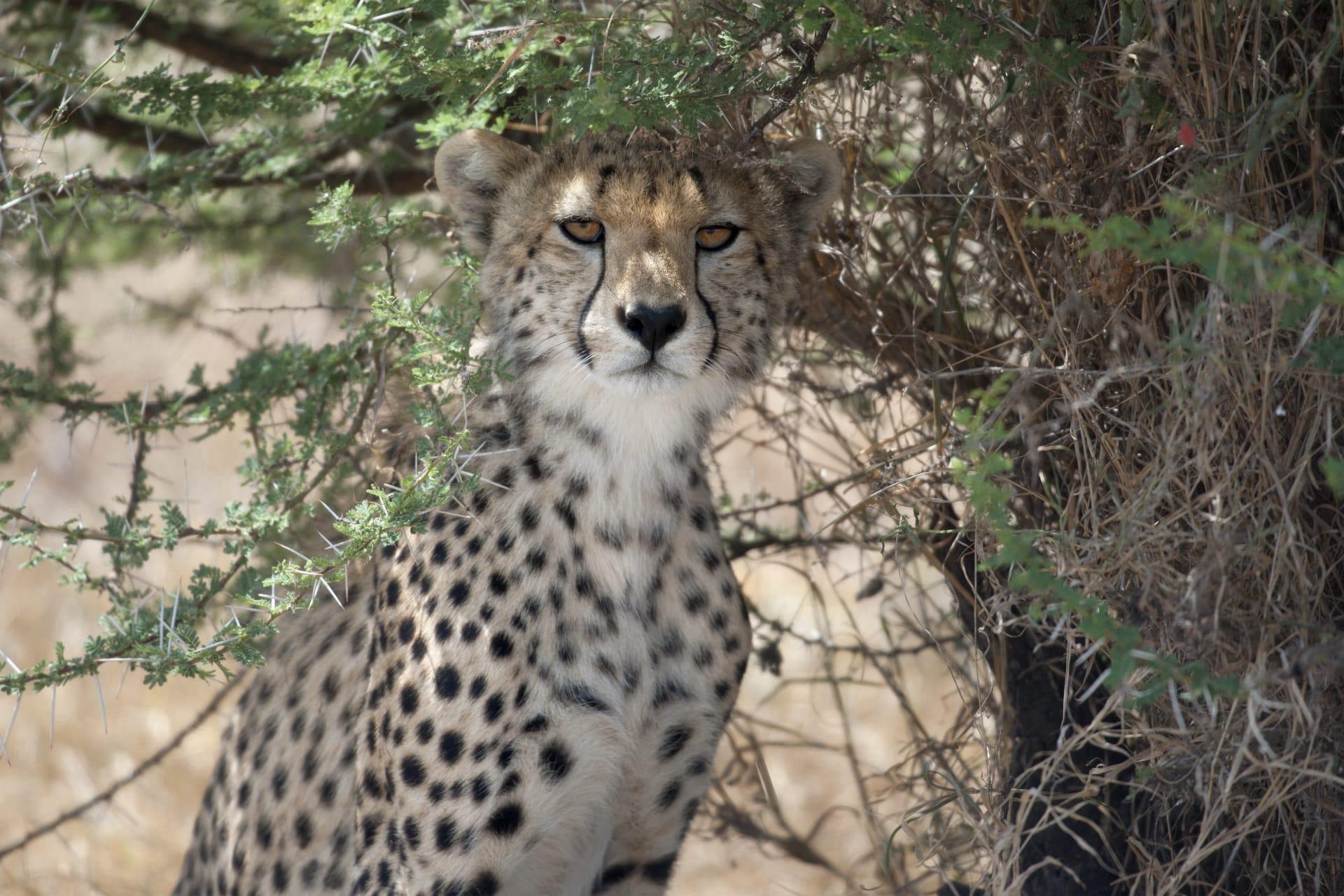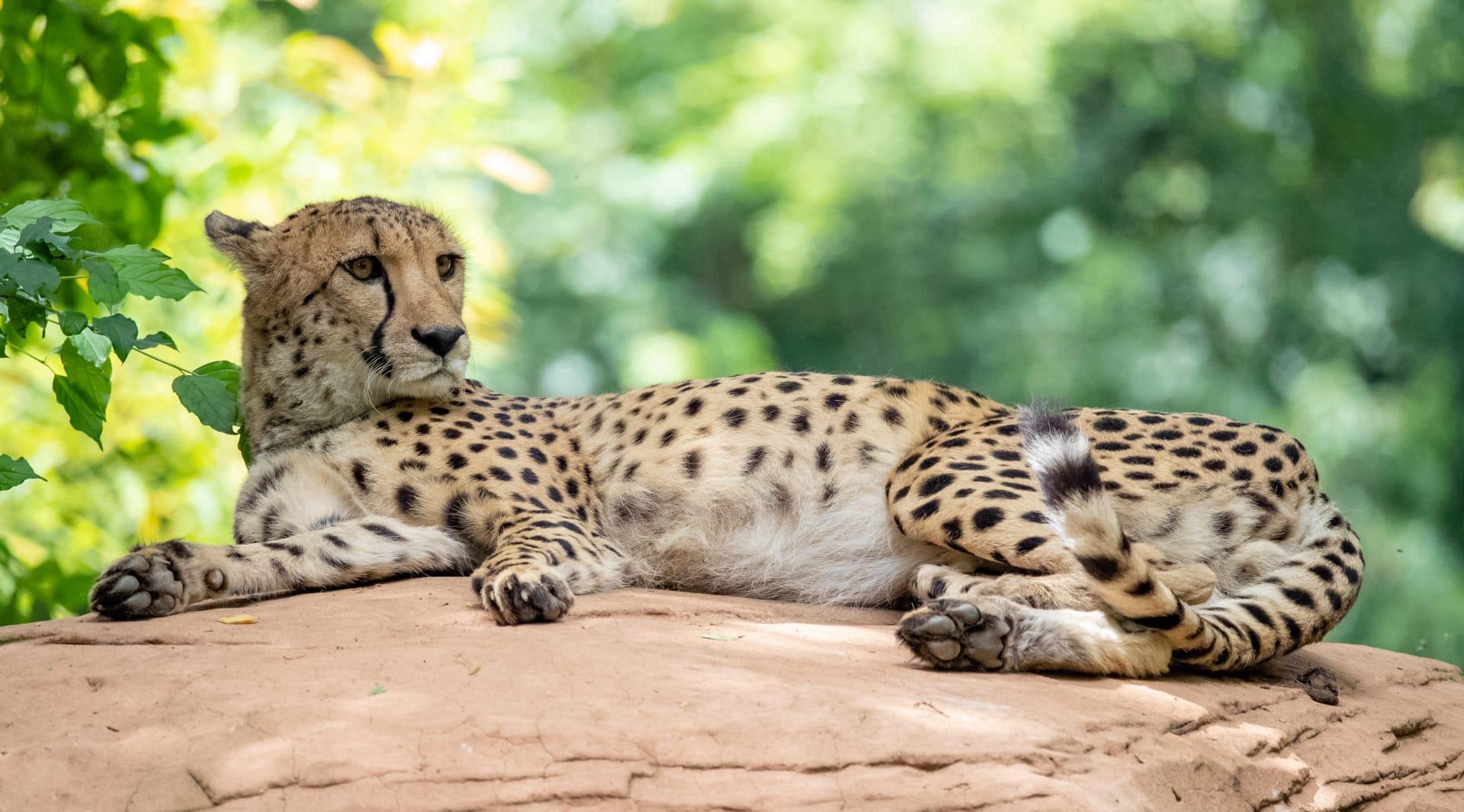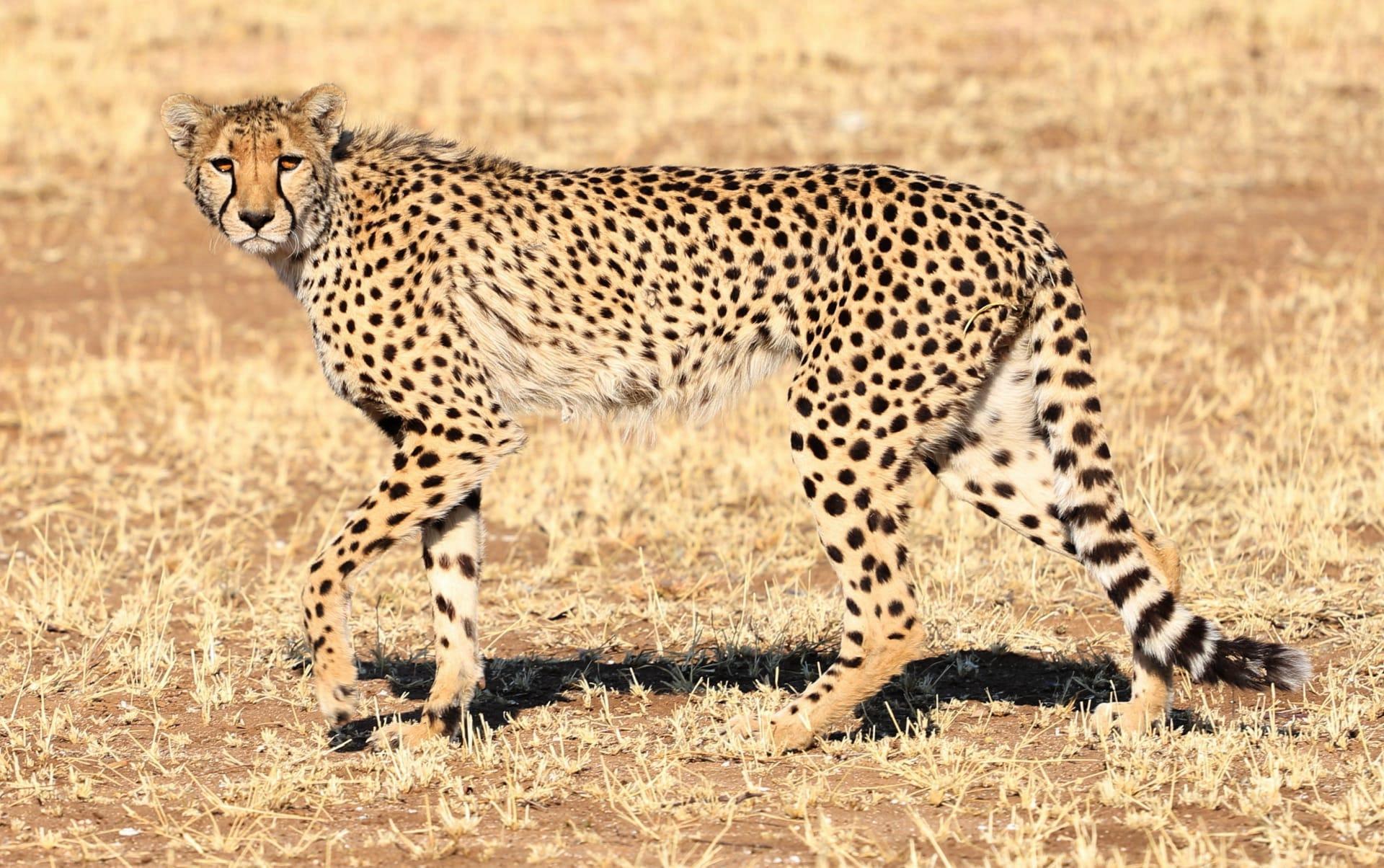1
Cheetahs are the fastest land animals in the world. They can reach speeds of up to 60 miles per hour (97 kilometers per hour) in just three seconds. That's faster than most sports cars at full throttle! This incredible speed comes from their slender, aerodynamic bodies, powerful leg muscles, and non-retractable claws that provide better traction. But cheetahs can't maintain this speed for long. They typically run at top speed for only 20 to 30 seconds. This sprint quickly uses up their body's oxygen reserves, making sustained chases impossible.
Cheetahs are unique among big cats for their specialized hunting technique. Unlike lions or tigers, which rely on power and ambush, cheetahs use their exceptional speed and keen eyesight to spot prey from afar. They prefer hunting in the early morning or late afternoon to avoid the midday heat. Once they spot a target, usually a smaller antelope like an impala, they stealthily approach and then burst into a high-speed chase. Their success rate is about 40-50%, which is quite high compared to other big cats.

2
Cheetahs have distinctive black "tear" marks on their face, running from the corner of their eyes down to the sides of their nose. These marks aren't just for looks; they play a crucial role in their hunting. They help reduce glare from the sun and improve their vision, much like the black marks athletes put under their eyes. This adaptation is vital for a predator that relies on sight over smell for hunting.
Another fascinating aspect of cheetahs is their social structure. Female cheetahs are solitary creatures, wandering large territories alone. They only come together with males briefly for mating. In contrast, male cheetahs are often found in groups, called coalitions. These coalitions are typically formed by brothers from the same litter, staying together for life. They work as a team to defend their territory and find mates, often using a variety of vocalizations, from growls to chirps, to communicate with each other.

3
Cheetahs are not built for climbing. Their slender, lightweight bodies are designed for speed, not strength. Unlike other big cats, such as leopards, cheetahs cannot climb trees and have a different approach to safety and observing their territory. They often use elevated areas like termite mounds or low branches to scout their surroundings. This vantage point allows them to spot prey and predators from a safe distance.
The cheetah's tail plays a crucial role during high-speed chases. It acts like a rudder on a boat, helping them steer and balance at incredible speeds. The tail's unique design, with a flat shape and thick, heavy fur at the end, allows the cheetah to make sharp turns, crucial for catching agile prey like antelopes that often change directions to escape.

4
Cheetahs have a unique vocalization that sets them apart from other big cats. They cannot roar like lions or tigers. Instead, they make a variety of other sounds, including purrs, chirps, hisses, and growls. The chirp, a bird-like call, is particularly interesting. It's used by mothers to call their cubs and can be heard over long distances. This sound is so distinct that it can sometimes be mistaken for a bird rather than a big cat.
Another interesting fact about cheetahs is their breeding habits. Female cheetahs give birth to a litter of 3-5 cubs after a gestation period of around 90 to 95 days. These cubs are born with a long, silvery-grey mane on their backs, known as a mantle. This mantle helps camouflage the cubs in tall grass, protecting them from predators. The cubs stay with their mother for about 18 months, learning hunting techniques and survival skills before venturing out on their own.

5
Cheetahs are not only fast runners; they also have incredible acceleration. They can go from 0 to 60 miles per hour (97 kilometers per hour) in just a few seconds. To put this into perspective, that's quicker than most sports cars. This acceleration is a critical factor in their hunting strategy, enabling them to catch up to swift prey like gazelles.
Lastly, cheetahs have a unique biological adaptation in their respiratory system. During a high-speed chase, a cheetah's respiration rate increases from 60 to 150 breaths per minute. This rapid breathing allows more oxygen to flow through their bodies, fueling their intense muscle exertion during the chase. However, this also means they can overheat quickly and must rest after a chase, making them vulnerable to other predators and scavengers that might try to steal their catch.